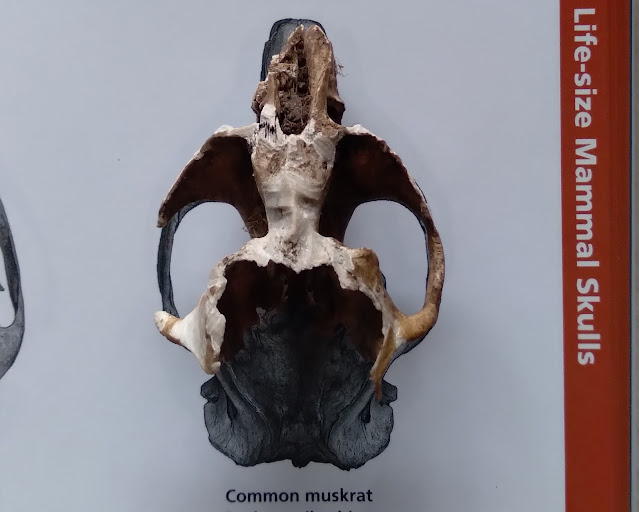Skull Talk
 |
| Jillian shares tracks, furs, and skulls of a few Northwoods mammals. |
On a busy morning, Summer Naturalist Intern, Jillian, sets out a table for the groups of visitors meandering in and out of our classroom. Aside from full taxidermy mounts of large mammals like a bear and mountain lion flanking the perimeter, the classroom is otherwise unoccupied at this time of the year. But with the new focal point introduced, I giddily watch as children, grandmas, new and returning visitors flock towards Jillian to feel real animal parts and share what they both know and wonder.
Here's a skull now...
Much like Yorick's famed skull in Hamlet, that of a raccoon or fox in the hands of our naturalists becomes a dramatic tool for storytelling, understanding the instruments of decay, and contemplation on the meaning of life and death.
 |
| A weathered, rodent-gnawed muskrat skull brought in by a visitor shares its story through visual cues. |
Hamlet naturally oozes in symbolism, but our interpretation of skulls in the collection is much more clear-cut. A fox skull is slender with a somewhat triangular outline - characteristic of a canine. Males are larger than females. Some teeth may be missing, but those remaining demonstrate the natural eating habits of the once-living animal. All clues to the animal's life are now woven into a dialogue between Jillian and visitor.
Learning together is at the heart of our naturalist-visitor encounter, and oftentimes the only catalyst we need is a skull in hand. First we talk, and then the skull does - sharing its story while we share ours.